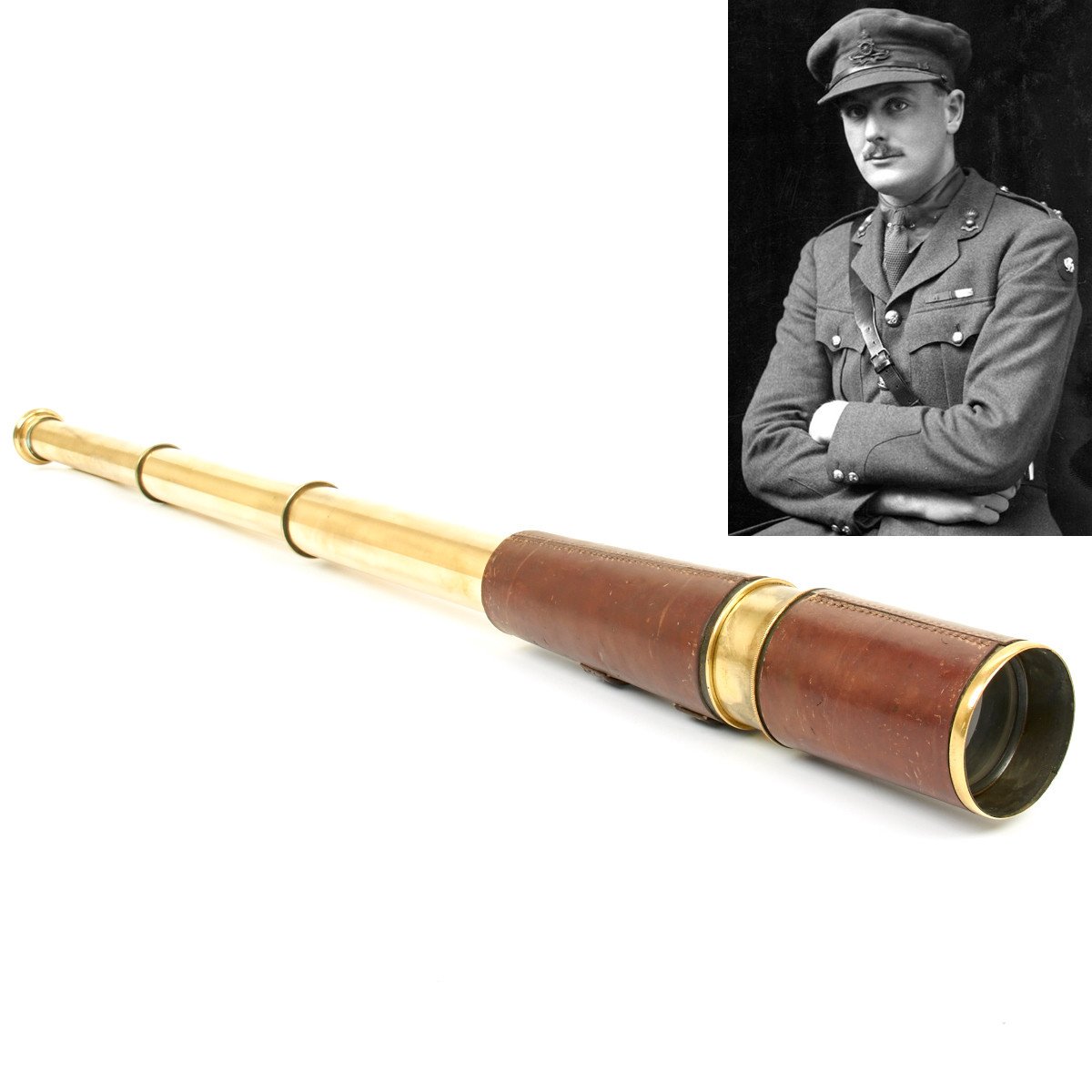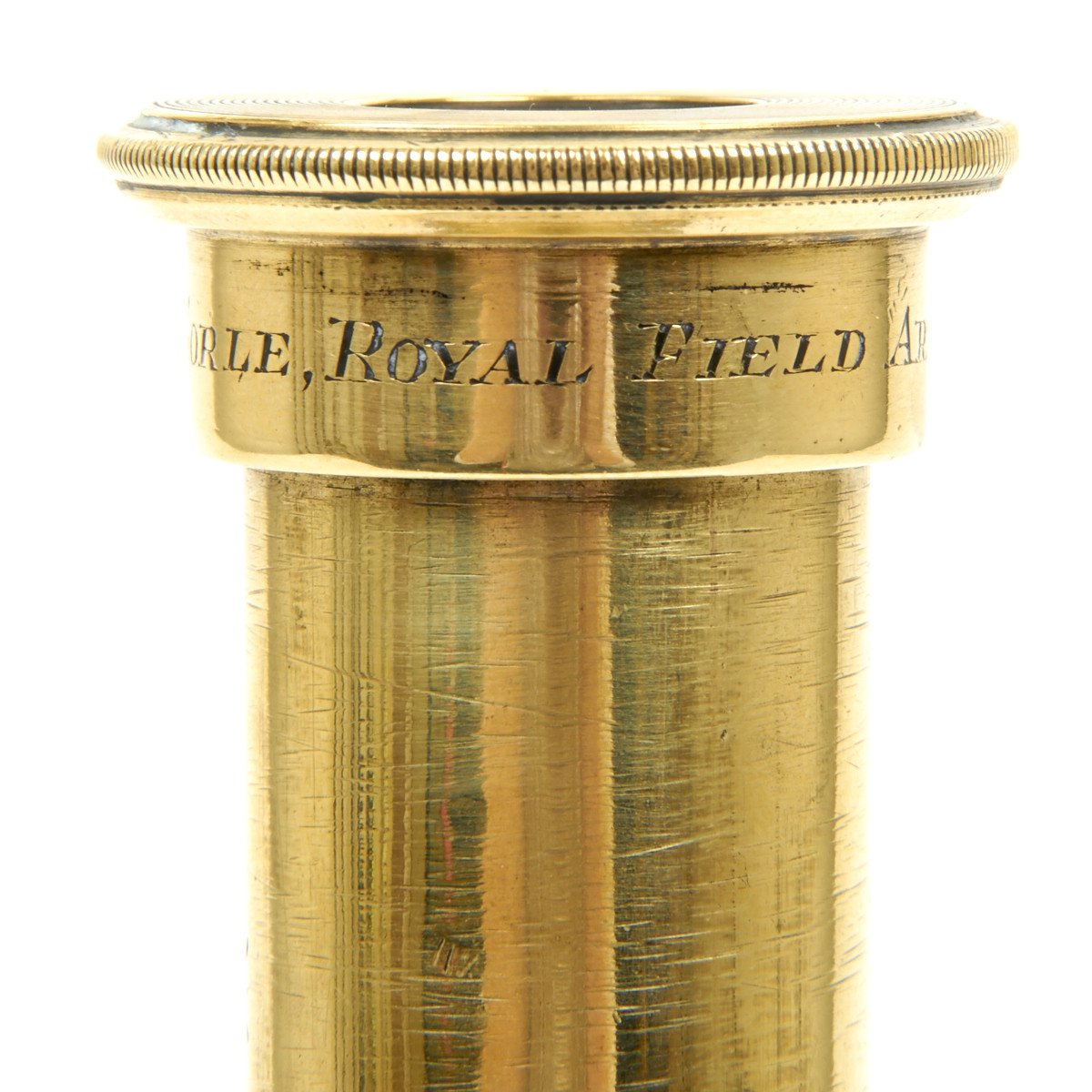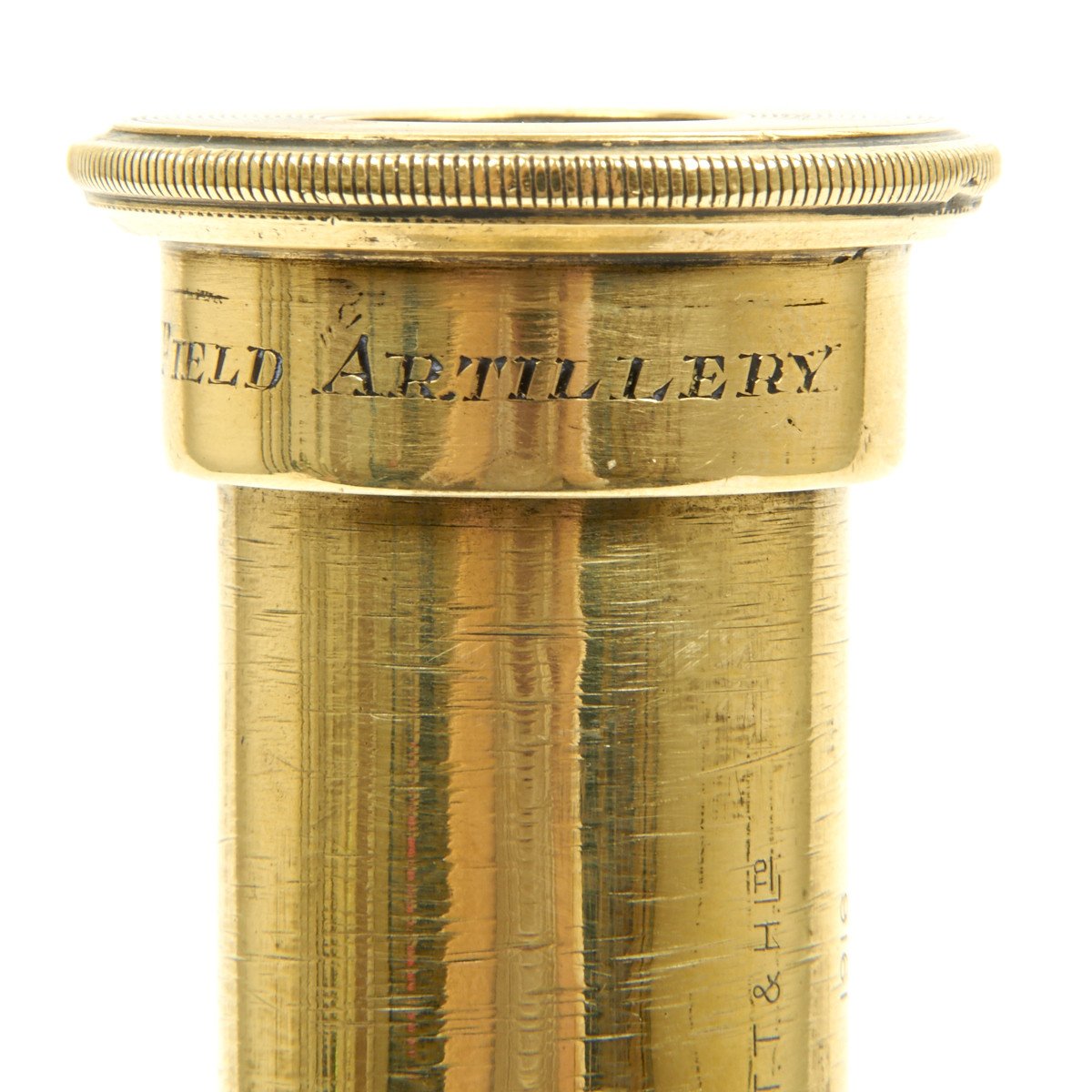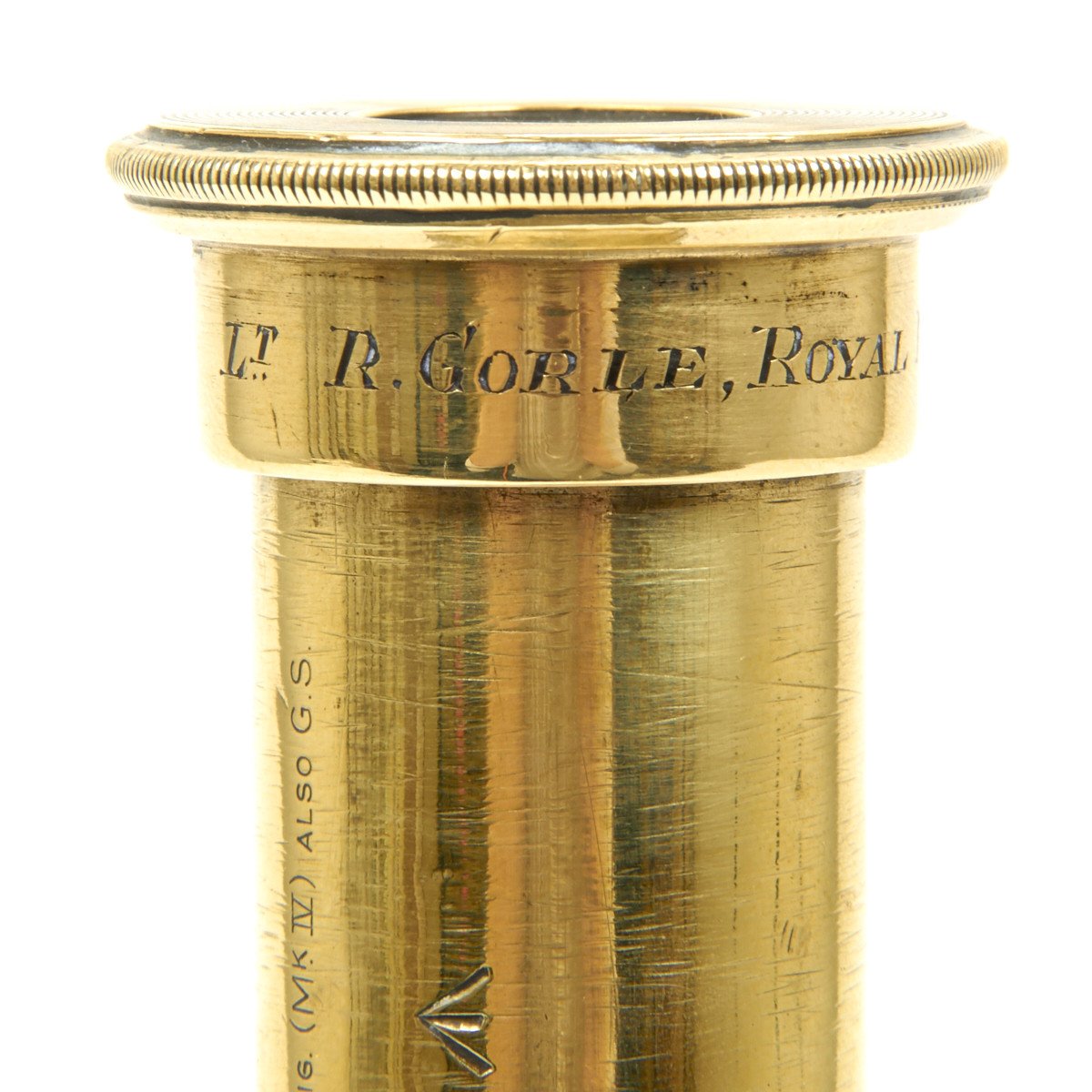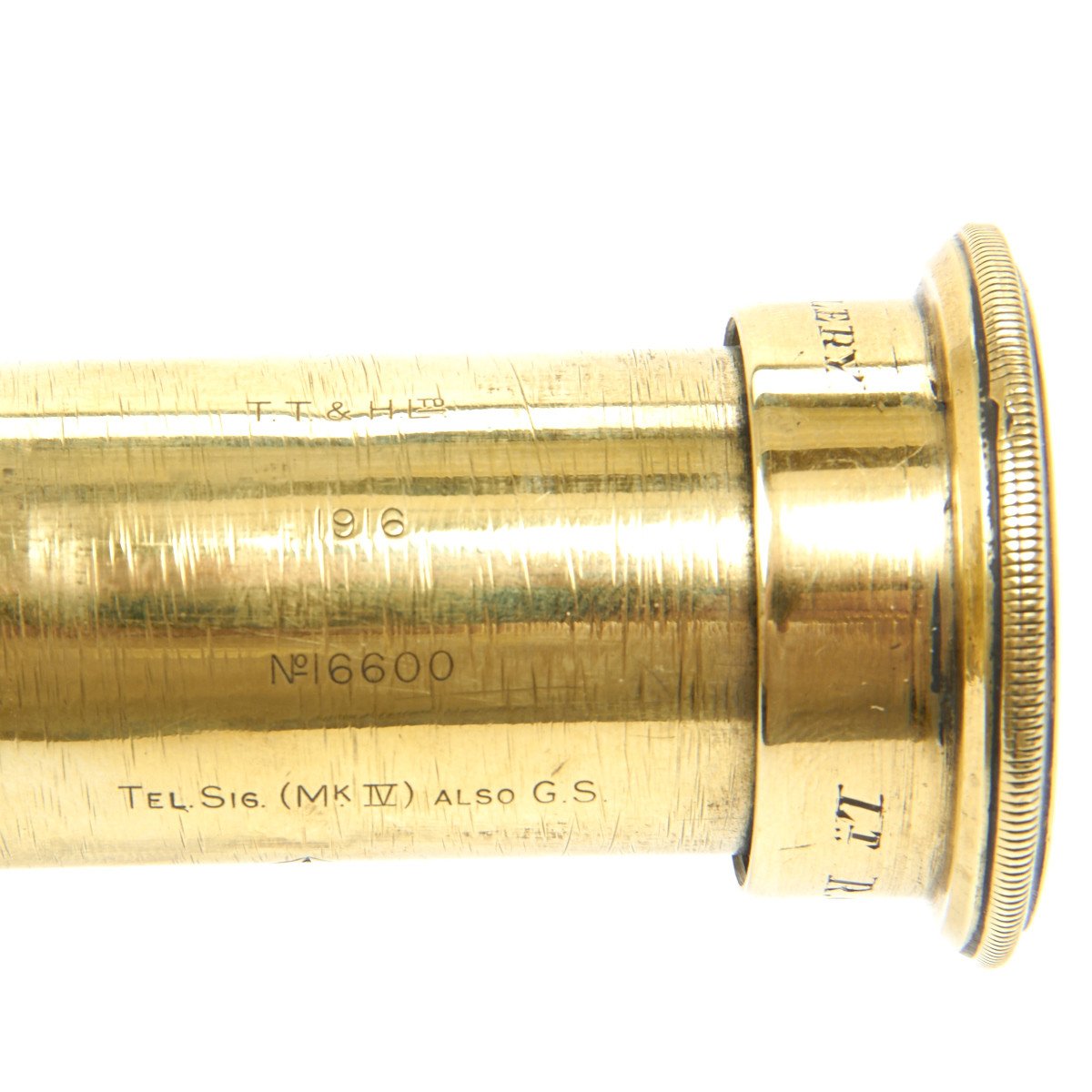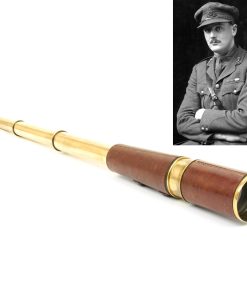Original British WWI Victoria Cross Recipient Named Telescope – Dated 1916 Original Items
$ 1.995,00 $ 498,75
Original Item: One-of-a-kind. This is a high quality fine ordnance marked telescope. It was manufactured by T.T. & H. Ltd in 1916 and nicely marked on the small brass cylinder as follows:
T.T. & H. Ltd
1916
No. 16600
Tel. Sig. (MkIV) Also G.S.
[broad arrow]Measures 34″ when fully extended and just 11 when collapsed, it is wrapped in fine quality lush brown leather.
The brass eye cup is marked:
LT. R. GORLE, ROYAL FIELD ARTILLERY
Robert Vaughan Gorle VC (6 March 1896 10 January 1937) was an English recipient of the Victoria Cross, the highest and most prestigious award for gallantry in the face of the enemy that can be awarded to British and Commonwealth forces.
Gorle was born in Southsea on 6 May 1896 and educated at Malvern College and Rugby School. Prior to the First World War was a farmer in South Africa.
Gorle was a temporary lieutenant in “A” Battery, 50th Brigade, Royal Field Artillery, British Army at Ledeghem, Belgium, during the First World War when he performed the deed for which he was awarded the Victoria Cross.
His citation in the London Gazette reads:
For most conspicuous bravely, initiative and devotion to duty during the attack on Ledeghem. on 1st October, 1918, when in command of an 18-pdr. gun working in close conjunction with infantry. He brought his gun into action in the most exposed positions on four separate occasions, and disposed of enemy machine guns by firing over open sights under direct machine-gun fire at 500 to 600 yards’ range. Later, seeing that the infantry were being driven back by intense hostile fire, he, without hesitation, galloped his gun in front of the leading infantry, and on two occasions knocked out enemy machine guns which were causing the trouble. His disregard of personal safety and dash were a magnificent example to the wavering line, which rallied and re-took the northern end of the village.
After the war Gorle returned to Africa, eventually settling in Southern Rhodesia where he was appointed as Sergeant-at-Arms to the Southern Rhodesian Legislative Assembly. He died on 9 January 1937 of pneumonia and emphysema and is buried in Durban, South Africa.
His VC is on display in the Lord Ashcroft Gallery at the Imperial War Museum, London after being purchased privately in 1993.
The Victoria Cross (VC) was awarded 628 times to 627 recipients for action in the First World War (19141918). The Victoria Cross is a military decoration awarded for valor “in the face of the enemy” to members of armed forces of some Commonwealth countries and previous British Empire territories. It takes precedence over all other Orders, decorations and medals; it may be awarded to a person of any rank in any service and to civilians under military command. The award was officially constituted when Queen Victoria issued a warrant under the Royal sign-manual on 29 January 1856 that was gazetted on 5 February 1856. The order was backdated to 1854 to recognize acts of valor during the Crimean War. The first awards ceremony was held on 26 June 1857, where Queen Victoria invested 62 of the 111 Crimean recipients in a ceremony in Hyde Park.
Fast Shipping with Professional Packaging
Thanks to our longstanding association with UPS FedEx DHL, and other major international carriers, we are able to provide a range of shipping options. Our warehouse staff is expertly trained and will wrap your products according to our exact and precise specifications. Prior to shipping, your goods will be thoroughly examined and securely secured. We ship to thousands clients each day across multiple countries. This shows how we're dedicated to be the largest retailer on the internet. Warehouses and distribution centres can be located throughout Europe as well as the USA.
Note: Orders with more than one item will be assigned a processing date depending on the item.
Before shipping before shipping, we'll conduct a thorough inspection of the items you have ordered. Today, the majority of orders will be delivered within 48 hours. The delivery time will be between 3-7 days.
Returns
The stock is dynamic and we cannot completely manage it because multiple stakeholders are involved, including our factory and warehouse. So the actual stock may alter at any time. It's possible that you may not receive your order once the order has been made.
Our policy is valid for a period of 30 days. If you don't receive the product within 30 days, we are not able to issue a refund or an exchange.
You can only return an item if it is unused and in the same state as the day you received it. You must have the item in its original packaging.
Related products
Uncategorized
Uncategorized
Uncategorized
Angolan Rebel 1970s era 60mm Inert Display Mortar from Angolan Civil War Original Items
Uncategorized
Uncategorized
Uncategorized
Uncategorized
Australian WWII Owen MK1 Machine Carbine SMG Custom Fabricated Replica with Sling Original Items
Uncategorized
Uncategorized
Uncategorized
Uncategorized
Uncategorized
Uncategorized
Uncategorized
Band of Brothers ORIGINAL GERMAN WWII Le. F.H. 18 10.5cm ARTILLERY PIECE Original Items
Uncategorized
Uncategorized
Armoured Fighting Vehicles of the World: AFVs of World War One (Hardcover Book) New Made Items
Uncategorized
Uncategorized
Uncategorized
Uncategorized
Uncategorized
Uncategorized
